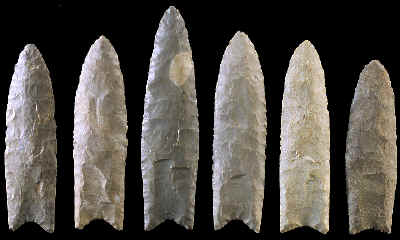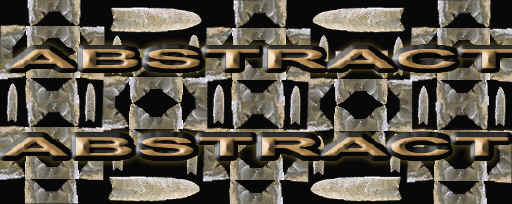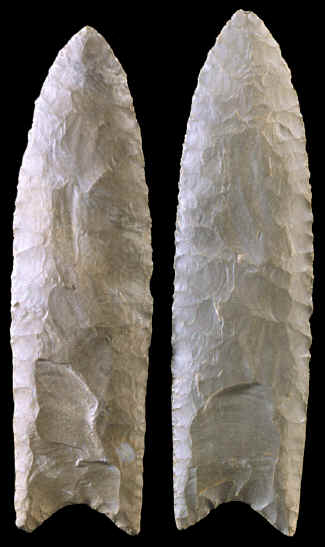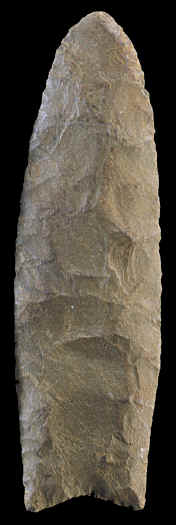|
||
|
"A
considerable diversity in form of the Clovis point has been noted, some
of which have been named as varieties such as Anzick Fluted, Bull Brook
Fluted, Colby Fluted, Debert, Holcombe, Redstone, Ross County and St.
Louis Fluted".---1985,
Gregory Perino, "Selected Preforms, Points and Knives of the North
American Indian" Vol. L, p. 78.
Clovis projectile points are the oldest recognized point type in North America. They were invented during the early Paleo-Indian period by Ice Age hunters. Clovis points were first described by Edgar B. Howard in 1935. They date to sometime between 10,500 to 14,000 years ago. |
||
|
||
|
There are many different styles of Clovis points and there are several that have been named. Noel Justice writes "Several named Clovis point types do appear to warrant recognition as distinct entities that represent stylistic trends within the Clovis horizon". Some of the different varieties of Clovis points are Anzick Fluted, Bull Brook Fluted, Colby Fluted, Debert, Holcombe, Redstone, Ross County, St. Louis Fluted and Gainey. Working out a typology for Clovis projectile points and knives has been a complicated issue. |
||
|
||
|
Most of the discoveries of Clovis points have been found by the general public. Archaeologist who study them usually have to travel to many different small collections to record and study them. Clovis points that have been scientifically excavated, produce the most valuable information. |
||
|
||
|
Clovis points from the eastern United States, like the ones pictured here, are different, in some ways, from examples found in the northwestern United States. The eastern points tend to be a little thicker, deeper concave bases and have longer flutes, at least on the larger unsharpened points. Many of the western Clovis points are slightly thinner and do not have the long wide flutes that so many of the eastern points have. But there are many different manufacturing traits that are used to define the different types of Clovis points. |
||
|
||
|
Clovis points come in all sizes. They can vary in size from a small example from Blackwater Draw in New Mexico that measures 1 1/16 inches (2.6 cm) long to the large "Rutz" Clovis point from Washington that measures 9 3/4 inches (24.7 cm) long. Some Clovis points were probably used on spears that were thrown with atlatls (throwing sticks). Others may have been used as thrusting spears. Also, many of them were probably hafted onto short handles and used as knives. |
||
|
||
|
All six of the Clovis points pictured here are excellent examples. They are in fact larger than most Clovis points and all were most probably found in cultivated fields. These six points were borrowed from four different collections. |
||
|
"REFERENCES"
1985,
Perino, Greg, "Selected Preforms, Points, and Knives of the North American Indians,
Vol. I," Clovis, p.78. |
||







